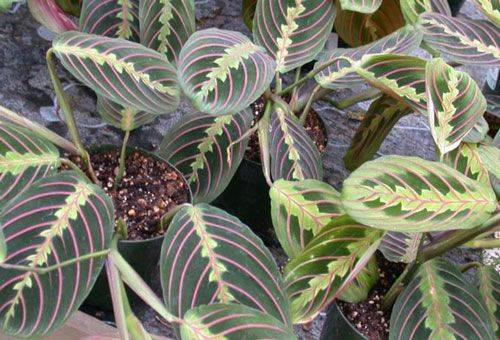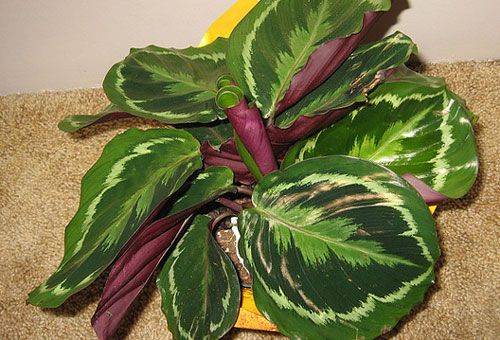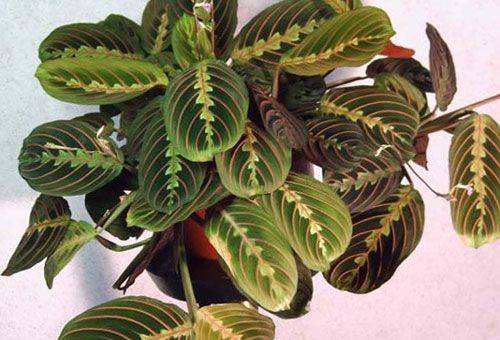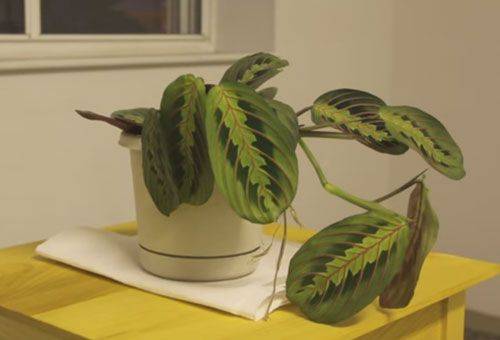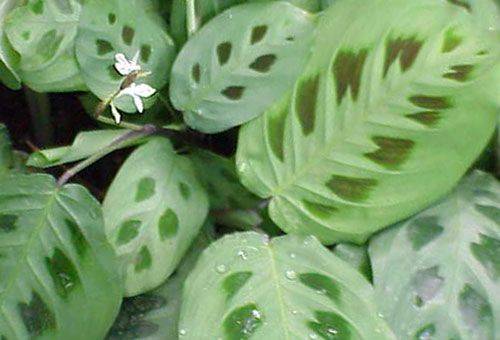How to care for the arrowroot at home?
Content:
Fans of indoor green spaces should take a closer look at the arrowroot - a perennial herb plant native to Brazil that can year after year please the owners with a bright decorative appeal. Caring for the arrowroot at home is not simple, but with careful attention, the flower will not cause big problems. Its hallmark is a specific reaction to adverse conditions traces.
If you care for the sample in accordance with all the rules, then its leaves will be in a strictly horizontal position. The green pet reacts to the effects of negative factors by moving the leaves to a vertical position. For this property, the people say the arrowroot is a "prayer plant."
Optimal conditions for breeding arrowroot
Species of the flower are few in number, there are no more than two and a half dozen. All of them have roots in the form of tubers and medium size. Variety is observed only in the form of leaves and type of shoots. The first can be round, oblong and in the form of an ellipse. The second stand straight or creep. Regardless of the variety, the care of arrowroot begins with the creation of ideal environmental conditions.
- Accommodation The flower prefers loneliness and negatively reacts to close proximity (regardless of whether these are species of arrowroot or representatives of other families). It is necessary to exclude the possibility of drafts and temperature changes. It is better not to put the bush on the windowsill, in the back of the room it will be more comfortable for him. Light is welcome diffused, not direct, not plentiful.
- The optimum temperature. In winter, the optimal values are considered to be in the range of 15-17ºС, in the summer - 22-24ºС. A sharp decrease in temperature with an equally sharp subsequent increase most often leads to the death of the plant. If there is such an opportunity, it is better to maintain a temperature of about 18 ° C all year round.
- Watering. Must be frequent and plentiful. All types of arrowroots respond positively to excess moisture. The main thing is not to fill the flower until the roots rot. Ideally, an earthen lump should be kept in a stable, wet state without traces of fluid stagnation. In winter, the quantity and quality of irrigation can be slightly reduced, but only if the temperature decreases. Water for irrigation must first be defended and warmed to room temperature.
Tip: In order not to fill the arrowroot, watering should be made frequent, and portions small. An additional advantage will be the layout of sphagnum or wet peat on a pallet.
- Air humidity. Moody flower will appreciate the increased humidity. To achieve optimal performance, it is recommended to use a special moisturizer or at least regularly spray the plant.
- Soil features. It is better to choose a substrate light, breathable. Experienced plant growers can knead the composition on their own, for beginners it is better to use finished products.
- Features of the introduction of nutrition. Caring for the arrowroot without introducing additional nutrition will not give the desired result. In the summer, the frequency of fertilizer should be once every couple of weeks. In the cold months, this figure can be reduced to once a month and a half. Preparations are better to take complex, involving preliminary dilution.
The creation of such conditions will help maintain the flower in optimal condition for several years.True, only subject to its timely and correct transplantation, as well as the elimination of factors that provoke the development of common problems.
Prayer Plant Transplant Rules
The first transplant is carried out immediately after the acquisition of the plant, provided that it was contained in a plastic pot in transport soil. After this, the manipulation is carried out no more than once every two years, while choosing containers that are a couple centimeters in diameter superior to the previous ones.
The procedure itself is quite simple and looks like this:
- At the bottom of the new pot, lay out the drainage layer, sprinkle it with part of the nutrient soil.
- Next, prepare the plant for transplantation. To do this, we first cultivate its outer part: cut off the dried leaves, wipe the elements from dust.
- We extract the flower from the old pot, carefully remove the clods of the old earth (if this is a planned transplant of an adult plant, then you can not get rid of the soil).
- We transfer the instance to a new place, sprinkle it with soil, which is only slightly compacted.
Before transplanting, you need to carefully familiarize yourself with the composition of the soil. If lime appears in it, it is better to refuse the product. This component significantly slows the growth and development of arrowroot.
Common problems with growing arrowroots and methods of dealing with them
Improper flower care can lead to the development of the following adverse events:
- Wilting and subsequent death of the stems are a sign of too low temperature and high humidity.
- Yellow, crumbling leaves on the contrary indicate excessive dryness of the air. Before proceeding with the correction of conditions, you must make sure that the plant does not suffer from too much watering. This can also cause a similar reaction.
- Twisted leaves are the effects of too bright and abundant lighting. If you find it in time and rearrange the arrowroot in the shadow, then the elements will quickly return to their normal state.
- If the leaves are not only folded into tubes, but also covered with specific spots, this indicates a lack of moisture. Watering needs to be increased, but you should not increase the volume of single servings.
To the great regret of lovers of a bright green bush, it is often subjected to pest attacks. Most often, a parasite acts as a scabbard or a red spider mite. In the first case, faint brownish plaques form on leaves and stems. If you do not do the treatment, then the parasite will destroy the plant by sucking juice from it. At the initial stage, the soap solution will cope with the infection. We moisturize the sponge in it and wipe the affected areas.
The pale color of the leaves and the appearance of whitish spots are signs of the mite's vital activity. It is necessary to immediately start using Actellik, Derris or Fitoverm to prevent leaf fall. In extreme cases, it is necessary to cut off the affected elements, but this must be done carefully and with special tools. Moreover, this does not cancel treatment with drugs.
Maranta can become a real highlight of boring decor, but only if you maintain its health and decorative attractiveness.
We recommend reading the article: how to care for a croton
